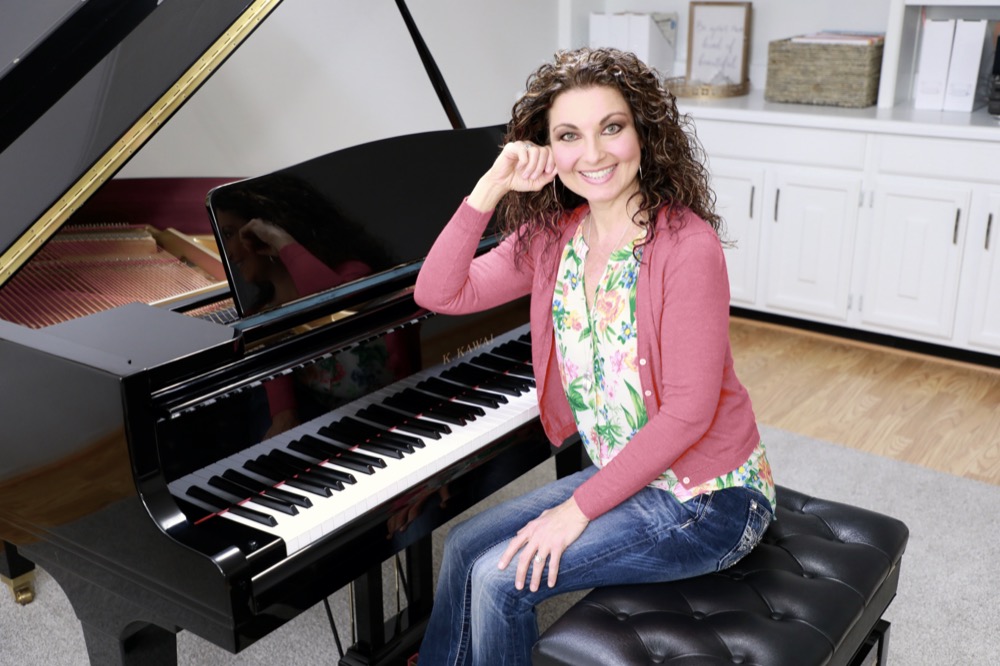The Adult Student Versus The Piano Lesson
This post may contain affiliate links. If you purchase something through an affiliate link, I will receive a small commission at no cost to you. For more information, read the disclosure statement here.

If you’re used to teaching piano to children, then you’ll know that the adult student piano lesson usually goes much differently!
Today, we’re excited to have guest author Jeff Millis sharing his thoughts with us on The Adult Student vs. The Piano Lesson.
children Piano Students versus the adult student
My gentle, friendly tone was not working for this adult student.
Most days he was earnest and eager, but what was this?
He had stopped talking. His mouth was still a strained smile, but his eyes were starting to slit.
He had asked his questions, but my answers didn’t jive with his idea of the right answers; no demonstration or rephrase from me was satisfactory.
A bit uncertain, I decided to defuse: “Would you like to table this for now, and work on something else?”
He would.
The moment was saved, and the lesson ended on a happy note.
Unpacking that exchange later led to one of the coolest insights we ever had together.
First, it forced me to think long and hard about the differences between teaching children and adults. I love both! And, I love that they’re different.
Are we aware of the strengths and weaknesses that both bring to their lessons?
Here is an incomplete list of the differences between the adult student and children:
- Kids usually start lessons because it was someone else’s idea. The adult student usually starts lessons on their own initiative.
- Kids who didn’t practice probably didn’t want to. Adults who didn’t practice probably didn’t have time, and wish they could have practiced more.
- Kids depend on their teacher to know what to do next and how to learn in a structured way. Adults are accustomed to researching, “figuring it out,” and choosing their own next step.
- Kids don’t usually start with specific long-term goals; they rely on their teacher to provide vision. Adults have no problem telling their teacher exactly what they want to accomplish at the piano someday.
- Kids follow directions carefully (assuming they’re trying their best). Adults frequently inform their teacher how and why they decided to practice differently than instructed.
- Since kids encounter new challenges in everyday life, a new musical challenge doesn’t overly unsettle them; failing on the way to success is business as usual. Adults have a deeper need to feel competent and in control; they’re used to living a routine they’ve already mastered and may unconsciously retreat from new, hard things.
- Kids love positive reinforcement. Adults tend to be skeptical of compliments and critical of themselves.
- Kids are proud of their progress, large or small, and like to show what they’ve learned. Adults default to downplaying their progress, preferring to draw attention to what they still can’t do instead.
It’s easy to wish kids had the motivation, independence, and cognitive maturity that the adult student has. But are there any childlike traits our grownups would benefit from recapturing?

Expectation Versus Reality When Teaching The Adult Student Piano
My adult student didn’t start that lesson upset. He was very confident at first, explaining why he had decided to practice differently than instructed.
His logic was well-intentioned, but flawed; his way was not going to work as he imagined.
I smiled, listened, and then explained why the original instructions were best practice.
The more I demonstrated how his way wouldn’t work, the more frustrated he became.
The item to address first turned out to be expectations, not music.
He had expected to master that skill much faster, as adults do. When following my instructions, he encountered a challenge that he didn’t overcome right away.
Rather than trust the process, he assumed “this isn’t working,” and reverted to practicing again the previous, already mastered skill. In his mind, somehow, spending more time on something old was going to help him progress with something new.
He thought he wanted to progress, but what he really wanted was to “feel” successful.
As soon as he went back to the thing he had previously mastered, the “feeling” of success and competence returned. What he didn’t realize is that he had sacrificed true progress to regain a feeling.
A child and an adult student can struggle with the same exact challenge. They may even make the same incremental progress in a lesson. Yet, one leaves feeling proud and successful, while the other leaves feeling self-disappointed.
The difference?
Expectations.
The child expected to fail along the way and make a little overall progress, and that’s what happened. The adult student expected to feel successful immediately, and not struggle at all … and how often does that happen?
For all the things kids find hard and adults find easy, why is facing challenge in a healthy way the thing adults struggle with the most?

Taking Lessons From Language
Much has been researched and said about the human brain and its stages of development. We’ve all read and heard how children acquire languages so much faster than adults.
I don’t doubt the science. Kids have an advantage.
However, there is perhaps an overlooked factor: How much time actually passes between Point A and Point B?
Point A: the time a person utters their first somewhat intelligible word
Point B: the time they are able to have a complete, fluent conversation, with basically anyone, about almost anything, using correct pronunciation, grammar, usage, inflection, perhaps even with figures of speech or sarcasm
The answer: years. A decade or more is normal!
No child, having just said “Mama!” for the first time, wakes up the next morning and thinks, “I’m not ready to talk in front of others today; my English is still so bad!!”
Every day, that kid, without any curse of self-consciousness, boldly uses whatever level of language they’ve achieved up to that point to self-express.
They have zero apologies about screaming a three word vocabulary all day, if that’s what they have to work with. They are not aware, nor do they care, that they’re “saying it wrong” until someone corrects them… and the result is that the vocabulary grows.
And they will keep talking, with a gradually evolving combination of correct and incorrect language, every single day, and that’s HOW they finally achieve mastery in their first language.
It’s not all just magic “kid brain elasticity” … it’s also kid fearlessness. It’s their confident willingness to use their new skill, at whatever its current level, without self-judgment.
Do your adult piano students, by default, never feel ready to play in front of anyone – even though they want to?
Do they try to refute your encouragement by pointing out something else they still can’t do (yet)?
They will find the freedom they want when they can understand one thing:
It is in the daily shameless use of the skill you currently possess that you experience the growth you want.
Kids believe us when we tell them they’re doing amazing things. They want to play the new, simple melody or chord pattern they just learned … because they just learned it!
And that’s supposed to be exciting. There is no manufactured sense of “not good enough yet” to squash the excitement.
When my adult student says things like:
- “I know you’ve heard much better.”
- “This must be so hard for you to listen to.”
… I remind them, I’m a music teacher, not a music critic. I hear their flaws as well as their growth, and I hear both in the context of their unique journey. I’m not faking my encouragement!
And I’m doubly excited when an adult student finally accepts it.
What Have You Learned Teaching The Adult Student?
Do you teach adults piano lessons? If so, we know you have some thoughts to share! Join the conversation by adding a comment.
More Blog Posts to Help you Teach Piano…
Don't miss out!
Follow on Facebook and Instagram, join the best Facebook group for piano teachers, and subscribe to the newsletter to get helpful teaching tips, resources, and tutorials delivered straight to your inbox every week.
Jeff Millis
Jeff Millis
Welcome!

Hi! I’m Melody Payne, a pianist and piano teacher, educational resource author, a fun-loving wife to the most wonderful and talented hubby I could ask for, and a lifelong learner who loves to share. I want to make your life as a music teacher easier by writing and sharing helpful and relevant music teaching articles, and by creating educational resources with your very own students in mind. If you are a parent who wants to enroll your child in piano lessons, I’d love for us to get started building those skills that can give your child a lifetime of musical enjoyment!


This Post Has 6 Comments
As much as possible I assign music the adult is familiar with. I gradually weave in unfamiliar tunes as they become more confident in note-reading and rhythm. And I redirect them frequently to think of how far they’ve come instead of how much more they wish they knew!
Great strategy!
I have found all those things Jeff has said to be true about teaching piano students. I would add one more: coordination. I have found adults to have just as much trouble coordinating their fingers as children. Finger size and arthritis are some of the additional challenges that adults face.
Very true!
This is such a good article! A wonderful way to verbalize what is happening with adults. While I teach mostly children, I have a few adults and this is exactly what I have seen through the years.
We humans are so consistent. 🙂